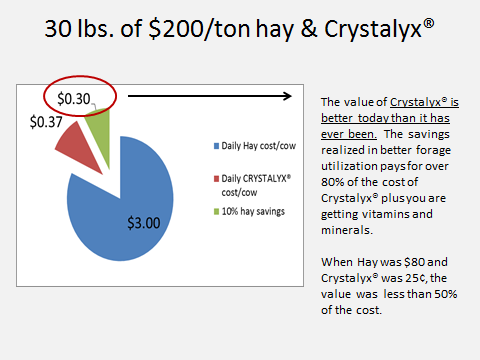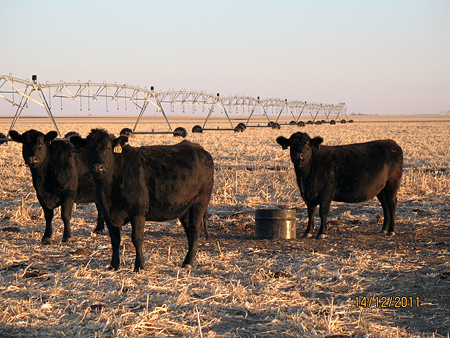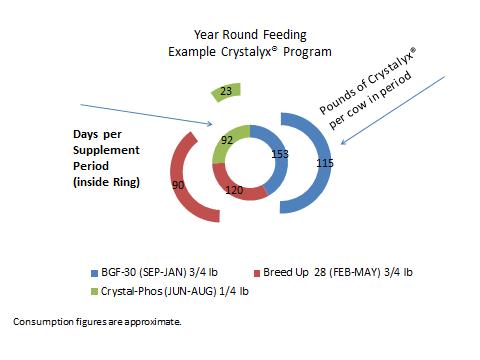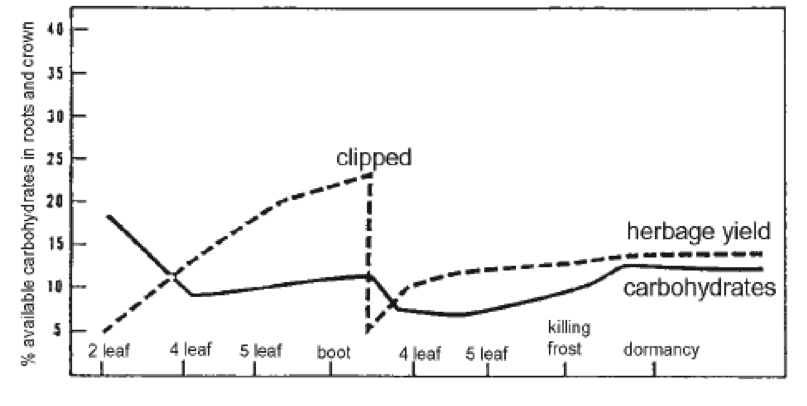Drought followed by Grass Tetany. Sound like a contradiction? It can happen, especially when pastures were grazed heavily during a drought and /or during dormancy. Spring growing conditions, combined with some moisture on relatively “denuded” pasture ground, means the only forage that’s available to grazing cattle is the lush fast growing new grass. In ideal grazing conditions, there would normally be some old growth or residual forage that gets grazed along with new grass at turnout. This helps dilute or minimize the amount of new grass being consumed; the new grass which poses the greatest risk to magnesium deficiency or Grass Tetany.
CRYSTALYX is the new normal
So What’s the New Normal?
Some may say what is normal, period? An average can be the mean of two extremes; I guess put another way it translates to volatility. The new normal in the feed and livestock business would probably be defined as higher costs/prices and ever increased volatility or price swings. This has definitely been the case in the past 4-5 years and one could write volumes on the reasons why; some are short term causes (drought) and others long term (market demand driven, political, etc...). These higher costs and values are basically the upward shift into a new level we see today and are likely here to stay. This volatility can create opportunity but can also pose great danger. Just ask anyone in the grain trading business.
All I want for Christmas: A cow’s perspective
The holiday season is a good time to reflect upon the past year. We might ask ourselves, what went wrong, right, what we’d do again, and what we learned not to do. 2012 was a challenging year in many respects. No doubt the drought was the most challenging and a news making event. It will be a large factor in shaping our industry for the next several years.
Grazing cornstalks: A beneficial practice
Cows grazing cornstalks, it’s a common practice in the Midwest, albeit some information is being written about it as though it was a new practice. It isn’t. However much has been learned with more recent research data and the ability to efficiently utilize this resource has improved with different strategies. This season, with the drought conditions plaguing a large area of beef cattle production, grazing not only cornstalks but other crop residue will have a new value component.
Year-round CRYSTALYX feeding
Traditionally, the use of CRYSTALYX® supplements has been in fall and winter months with running age beef cows. This is still where the vast majority of product volume is used but growth within other segments of beef cow production and during spring and summer months has been growing. Earlier blog articles have described the benefits of using CRYSTALYX® as a vehicle to deliver not only protein and energy but mineral/vitamin programs in the summer, additives for fly control and growth promotants, etc…
CRYSTALYX fundamentals
2012 has been a tough year for many in our business so far. The negatives of the drought and its effect on the industry continue to make headlines. In times such as these I find it important to remind customers, prospects and fellow colleagues of the basic fundamentals of CRYSTALYX® supplement programs. During opportune or inopportune times (depending on how you see the glass as ½ full or empty), a lot of producers and sales people study alternatives which means there are new people looking at CRYSTALYX® programs.
Early weaning of beef calves it’s about the cows too!
If you’re in the cattle business, drought is a bad word but sooner or later the occurrence of drought is likely going to be reality. A good portion of cow-calf producing regions in the U.S. and Canada are in areas that may experience dry conditions more years than not. So, preparations for dry years and their consequences need to be understood. This article is not necessarily about drought, but of early weaning of beef calves; one of many drought management strategies.
Annual crops can provide additional grazing or stored forages when needed
Utilizing Annual crops as feedstuffs for livestock is a common practice, and in today’s environment of higher forage and pasture costs, it really makes sense. Many and maybe most livestock production systems today involve some sort of farming aspect to the operation. Yes, producing hay is considered farming in some circles but that’s not the point of this blog. In sustainable ranching practices, having the forage resource available and not having to purchase significant amounts of additional forages or supplements is a key indicator of profitability.
Delay spring turn out on cool season or mixed pastures: Don’t graze too early
In many areas of the central and northern plains states, spring has sprung early this year. I’ve heard locals in these areas comment that grasses, trees and shrubs are anywhere from 2-4 weeks ahead of normal; certainly the temperatures would agree with that. I was in the Canadian province of Ontario the last week of March and I heard that some folks had already planted small grains and even corn, just to say they did it in March. Grass (native or tame pasture) is truly a crop and livestock are the harvesting equipment. With the early spring and green up occurring, it is tempting to let the grazing begin now. High forage costs also make it tempting, but let’s take a closer look.
Beef replacement heifers
The beef cow herd number in the U.S. has been on a steady downward trend since the peak of the last defined cattle cycle (mid 1990s). In Canada, the number has been an even steeper decline. Some would suggest that the cattle cycle is broken, looks different or is simply not well defined today. Record values of essentially every class of animal in the beef industry, coupled with low inventory and supplies, is leading to an outcry by many analysts and experts for herd expansion. Well, these calls are likely being heard to some extent as there is evidence of more replacement females being retained.




